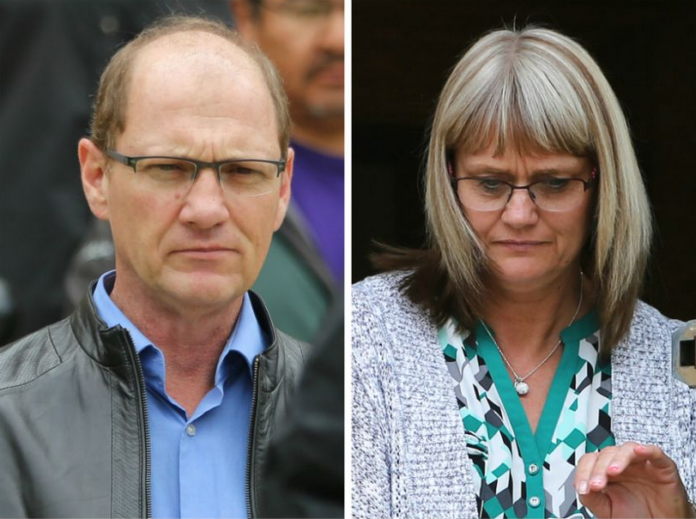A pair convicted of conspiring to murder their spouses have had their appeals allowed and a new trial ordered after the Saskatchewan Court of Appeal ruled the trial judged made mistakes in his instructions delivered to the jury.
Curtis Vey and Angela Nicholson were convicted by a jury in June 2016. The couple from Wakaw and Melfort respectively, had been overheard on a recording made by Vey’s-then wife plotting to kill her and Nicholson’s then-husband.
Nicholson maintained she did not intend to carry out the plan, while Vey said told both an interviewing officer and an undercover officer that he knew he was being recorded and said what he did just to get back at his wife and give her something to talk about.
Vey’s wife, Brigitte, said she had confronted Vey with previous recordings to get him to admit he was having an affair.
The Crown’s case relied on the recording made by Vey’s wife, as well as statements given to police and recorded conversations with undercover officers.
The Jury began deliberations at about 1 p.m on Friday, June 3, 2016, and deliberated for two and a half days before coming back with guilty verdicts at about 5:30 p.m. on Sunday, June 5, 2016.
During their deliberations, the jury asked about how to find an agreement, what the difference was between intention and agreement and the difference between proving intention by overt acts and by inferences.
In both his initial instructions and answers to questions, the court of appeal found the judged erred.
“The jury charge was crafted with obvious attention and, as such, I would dismiss most of the grounds of appeal,” Madam Justice Jackson wrote in a unanimous appeals court decision.
“Nonetheless, having regard for the evidence that suggested Mr. Vey knew, or suspected, he was being recorded, and in light of the questions the jury asked, I am persuaded it was not made plain to the jury that (a) they were required to be satisfied beyond a reasonable doubt that both appellants had a genuine intention to agree to commit murder and (b) they could not draw an inference of guilt from circumstantial evidence unless it were the only reasonable inference that the evidence permitted.”
In her reasons, Jackson wrote that the Crown must prove both a genuine intention to agree to the conspiracy and an intent to commit the deed beyond a reasonable doubt. There must be a true consensus, she wrote.
For something to be a conspiracy, it’s not enough that they both talked about the same thing at the same time or in the same place, she said. It is necessary to show “a meeting of the minds, a consensus to effect an unlawful purpose. … A conspiracy can only exist when at last two people intend to agree and intend to carry out the common purpose.”
Jackson wrote that it must be made clear to the jury that if one of the accused did not intend to agree to the conspiracy, or did not intend to carry out the plot, both would have to be acquitted.
The Court of Appeal found that the instructions given to the jury didn’t adequately address Vey’s claim that he was not intending to agree, but was pretending to agree to get back at his family.
“The jury should have been instructed that if they were satisfied that Mr. Vey did not intend to agree to carry out the common purpose, or if they had a reasonable doubt as to his intention, not only would they be required to acquit Mr. Vey, they would also be required to acquit Ms. Nicholson,” Jackson wrote.
Jackson also wrote that the instruction to the jury failed to explain the difference between discussion but not agreeing and the genuine intention to agree, instead equating those two outcomes.
That alone would have been grounds to merit a new trial, Jackson wrote, but the Court of Appeal found a further issue with the jury’s instructions.
The Court found that the trial judge failed to inform the jury that any inferences they make from circumstantial evidence must also be beyond a reasonable doubt. The trial judge also didn’t explain that a jury could infer someone’s guilt from circumstantial evidence if it is the only reasonable explanation.
The jury asked a question about this, Jackson said, but the judge’s answer wasn’t adequate
“The trial judge’s response left them with the impression that they would be at liberty to draw inferences from what was said an observed on the basis of reasoning alone,” she wrote.
‘The trial judge was required to expand on his charge and explain that the jury could draw the inference only if they were satisfied beyond a reasonable doubt that there was no other rational inference. The jury needed further instruction about … to what degree they had to be satisfied before they could find guilt.”
This would also merit a new trial, the court ruled.


